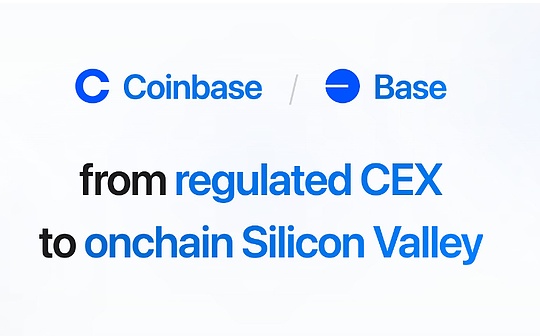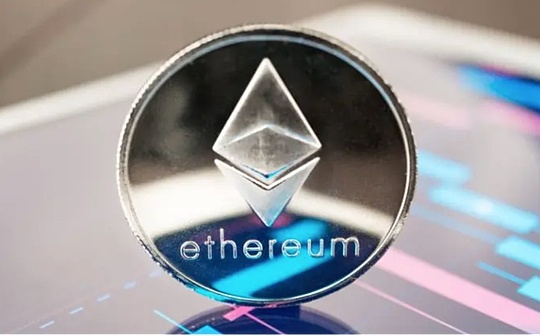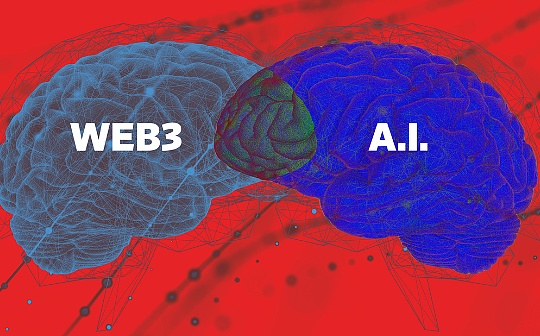
Source: Honeycomb Tech
With the popularity of AI models, the integration of AI and Web3 has become a popular sector in the crypto asset market, and the two technologies have burst out with potential for integration at the application level of “data”.
The basis of the popular AI natural language big model is “three calculations”, one of which is calculation data. In theory, the larger the data set provided for the big model, the stronger the learning and prediction ability after effective training will be.The underlying blockchain technology of Web3 is essentially a distributed database, and the chain structure of data packaged in time forms the characteristic that data cannot be tampered with.
The two may have complementary advantages.Web3 blockchain can safely store data. As an ledger, its “distributed storage and computing” attributes can provide pricing and authenticity guarantees for AI’s computing data level; while AI can improve blockchain transactions.Efficiency, automate complex data processing programs.
An example is the automation of on-chain transactions, which can be applied in the crypto asset market.Machine learning-powered AI algorithms can track market fluctuations, analyze large-scale data, find patterns and trends, and execute transactions based on predetermined standards.
AI can also be applied to the security of blockchain, using machine learning algorithms to check transaction data, look for suspicious trends or exceptions, and constantly learn from the data to avoid new risks.
Although both AI and Web3 are in their early stages, the former is believed to be likely to bring changes to Web3 and even the crypto asset market.A Fortune Business Insights report shows that the blockchain’s artificial intelligence market was $220.5 million in 2020 and could reach $973.6 million by 2027, with a CAGR of 23.6%.
Taking stock of AI+Web3 projects, it is not difficult to find that the current eight early leading projects mainly play the characteristics of “AI improve productivity” and have applied the capabilities of AI big models and machine learning to the underlying technical facilities or specific applications of Web3.include:
-
Apply the multimodal generation (AIGC) capability of AI to NFT generation;
For example, ChainGPT (CGPT), this blockchain artificial intelligence solution can not only provide common text content generation and AI chat robot functions in the Web2 world, but also an NFT generator; for example, Aspecta, it builds an artificial intelligence generatedIdentity system, which links accounts that Web2 and Web3 through Aspecta ID, forms community connections based on the experience and experience of account holders, and accesses different DAOs and applications.
-
Transform AI’s machine learning capabilities into tools/platforms for building Web3 applications;
For example, Fetch.ai (FET), an infrastructure for developing decentralized applications, uses artificial intelligence automation technology to provide tools to create and connect intelligent agents (Agents) to help users perform complex tasks in the digital economy..
-
Apply the capabilities of Web3 distributed storage, transactions, and computing to the means of production/resources required for AI development;
For example, iExec (RLC), a decentralized computing asset market based on blockchain, aims to connect resource providers with resource users, allowing anyone to rent computing power and data sets; for example, decentralized laborSmart Service Network SingularityNET (AGIX), which allows users to publish services to the network for paid (crypto assets) integration.
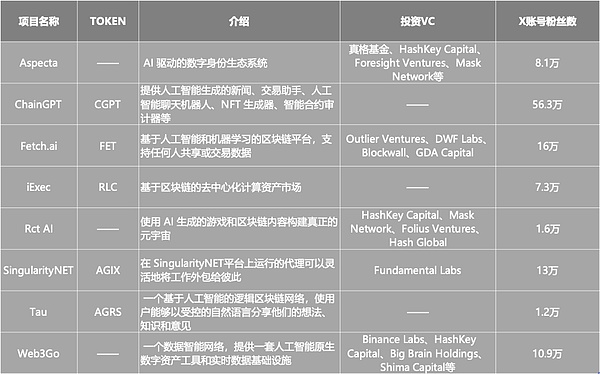 8 early AI+Web3 leading projects
8 early AI+Web3 leading projects
In AI+Web3, in addition to the above eight early leading projects, some new “sports” are also on the way to the track.
For the most obvious junction of “data”, some projects use the distributed characteristics of blockchain to solve the problem of data monopoly.
For example, Bagel Network, which created the concept of a “machine learning data lake”, allows users to store all structured and unstructured data at any scale, and supports data scientists and AI engineers to obtain/exchange in a low-cost and privacy-protecting way.Those authorized and verifiable datasets.The purpose of Bagel Network is to build a decentralized data platform to support machine learning (ML) models.
There are also many new projects that directly exert AI’s capabilities to the most popular financial application level of Web3, including the transaction and payment fields of crypto assets.
For example, GT Protocol, it is a crypto asset AI execution protocol incubated by ChainGPT. It allows any entity or individual to create a DeFi smart contract pool, using AI to collect and manage the liquidity contributed by users, and on the one hand, it exerts the automation capabilities of AI.On the other hand, it also takes advantage of the transparent features of smart contracts on the chain.
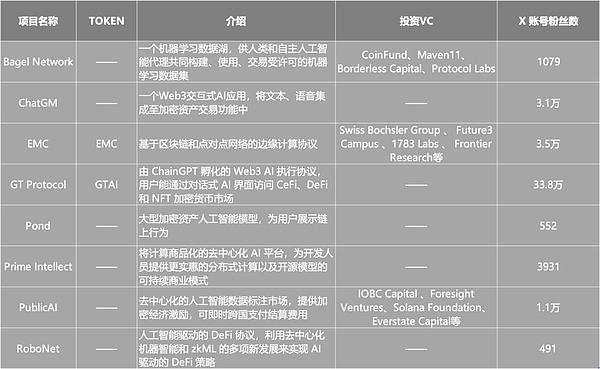
8 new AI+Web3 applications
It can be foreseen that in 2024, the big models and applications surrounding AI will continue to develop in an endless stream, and Web3, a world that loves to pursue hot spots, will continue to follow the trend of AI, the evolution of the two technologies andInterconnection will also increase the scale of the AI sector in the crypto asset market.





